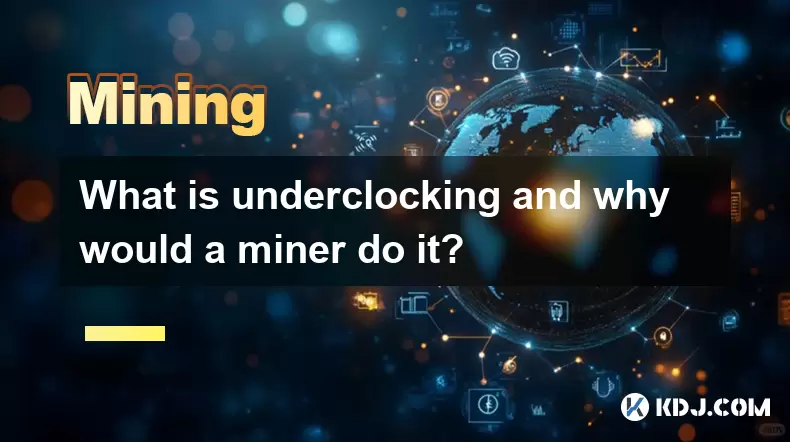-
 Bitcoin
Bitcoin $117,623.6666
0.22% -
 Ethereum
Ethereum $3,118.3376
5.20% -
 XRP
XRP $2.9135
1.52% -
 Tether USDt
Tether USDt $1.0001
0.01% -
 BNB
BNB $686.9764
0.85% -
 Solana
Solana $162.6889
1.69% -
 USDC
USDC $0.9999
0.00% -
 Dogecoin
Dogecoin $0.1969
2.83% -
 TRON
TRON $0.3010
0.33% -
 Cardano
Cardano $0.7390
1.96% -
 Hyperliquid
Hyperliquid $47.4375
-1.09% -
 Stellar
Stellar $0.4579
2.57% -
 Sui
Sui $4.0002
1.65% -
 Chainlink
Chainlink $15.9383
3.70% -
 Hedera
Hedera $0.2348
1.25% -
 Bitcoin Cash
Bitcoin Cash $497.4031
0.86% -
 Avalanche
Avalanche $21.8528
5.41% -
 UNUS SED LEO
UNUS SED LEO $8.8249
-2.01% -
 Shiba Inu
Shiba Inu $0.0...01362
5.22% -
 Toncoin
Toncoin $3.0789
3.06% -
 Litecoin
Litecoin $95.7463
3.56% -
 Polkadot
Polkadot $4.0469
4.72% -
 Monero
Monero $334.4798
-0.76% -
 Uniswap
Uniswap $9.1691
3.68% -
 Dai
Dai $1.0002
0.03% -
 Ethena USDe
Ethena USDe $1.0005
0.00% -
 Bitget Token
Bitget Token $4.5441
4.51% -
 Pepe
Pepe $0.0...01257
5.29% -
 Aave
Aave $325.4694
4.71% -
 Bittensor
Bittensor $434.8969
4.99%
What is underclocking and why would a miner do it?
Underclocking GPUs in crypto mining boosts energy efficiency, reduces heat, and extends hardware lifespan with minimal impact on performance.
Jul 16, 2025 at 03:14 am

Understanding Underclocking in Cryptocurrency Mining
Underclocking refers to the process of reducing the clock speed of a graphics processing unit (GPU) or application-specific integrated circuit (ASIC) used in cryptocurrency mining. This technique is often employed by miners who seek to optimize their hardware performance for specific outcomes such as energy efficiency, heat reduction, and long-term durability.
In the context of crypto mining, where high computational power is constantly demanded, underclocking allows miners to operate their equipment at lower speeds than the factory default settings. This does not necessarily mean a proportional drop in mining output but can significantly impact power consumption and thermal management.
How Underclocking Affects Power Consumption
One of the primary reasons miners resort to underclocking is to reduce electricity costs. High-performance mining rigs consume large amounts of power, which can eat into profits, especially in regions with expensive electricity rates.
- Reducing GPU clock speed lowers voltage requirements
- Lower voltage leads to reduced power draw
- Decreased power consumption translates into lower operational costs
By fine-tuning these settings, miners can achieve a more favorable hash rate per watt ratio. This means they are getting more mining performance for each unit of electricity consumed, which is crucial for maintaining profitability over time.
Thermal Management Through Underclocking
Mining operations generate significant heat due to continuous high-intensity computations. Overheating can lead to hardware degradation, reduced lifespan, and even system crashes. Underclocking helps mitigate this risk by lowering the overall thermal output of the mining components.
- Lower clock speeds produce less heat
- Reduced temperatures decrease reliance on aggressive cooling systems
- Stable thermal conditions enhance system reliability
Miners operating in hot climates or without adequate ventilation find underclocking particularly beneficial. It allows them to maintain consistent uptime without the need for expensive cooling infrastructure.
Prolonging Hardware Lifespan via Underclocking
Cryptocurrency mining puts immense stress on hardware components, especially GPUs. Running at full capacity for extended periods accelerates wear and tear. Underclocking acts as a form of preventive maintenance, extending the usable life of mining equipment.
- Stress on components like VRAM and transistors is reduced
- Slower aging of silicon chips due to lower thermal cycling
- Miners can delay costly upgrades or replacements
This is especially important for small-scale miners or those using consumer-grade GPUs that were not originally designed for 24/7 mining workloads.
Performance Trade-offs and Optimization
While underclocking reduces power usage and heat, it may also result in a slight drop in hash rate. However, many miners find that the trade-off is justified when considering long-term sustainability and cost savings.
- Performance loss is often minimal compared to the benefits gained
- Proper tuning allows for balanced performance and efficiency
- Some algorithms respond better to underclocked configurations
For example, Ethereum mining with AMD Radeon GPUs has shown that certain memory timing tweaks combined with underclocking can actually improve stability and efficiency without drastically affecting hash rates.
How to Underclock Your Mining Hardware
Underclocking requires careful configuration using software tools tailored for GPU or ASIC tuning. Here’s how you can begin:
- Use mining-specific software like MSI Afterburner, NVIDIA Inspector, or Awesome Miner
- Gradually reduce core clock and memory clock values
- Monitor hash rate and temperature changes after each adjustment
- Test stability over several hours to ensure no crashes or errors occur
- Save preferred profiles for easy switching between overclocked and underclocked modes
Each GPU model reacts differently, so experimentation is key to finding the optimal balance between performance, power usage, and heat output.
Frequently Asked Questions
Q: Does underclocking void my GPU warranty?
A: Generally, underclocking itself does not void warranties. Unlike overclocking, which often involves increasing voltages and pushing hardware beyond specifications, underclocking operates within safer parameters and typically doesn't cause physical damage.
Q: Can underclocking improve mining stability?
A: Yes, underclocking can enhance stability by reducing electrical stress on components and lowering temperatures. Many miners report fewer crashes and better uptime after properly tuning their hardware.
Q: Is underclocking suitable for all cryptocurrencies?
A: While underclocking can be applied across various mining algorithms, its effectiveness depends on the specific algorithm's demands. Algorithms like Ethash benefit from memory tuning, while others may require different optimization strategies.
Q: Can I switch between overclocking and underclocking easily?
A: Yes, most modern tuning tools allow users to create and save multiple profiles. These profiles can be quickly switched depending on whether you're mining, gaming, or performing other compute-intensive tasks.
Disclaimer:info@kdj.com
The information provided is not trading advice. kdj.com does not assume any responsibility for any investments made based on the information provided in this article. Cryptocurrencies are highly volatile and it is highly recommended that you invest with caution after thorough research!
If you believe that the content used on this website infringes your copyright, please contact us immediately (info@kdj.com) and we will delete it promptly.
- Bitcoin's Bullish Run: Demand Surges, Correction Unlikely?
- 2025-07-16 12:30:12
- MetYa, Conflux Network, and SocialFi: Building the Future of Web3
- 2025-07-16 12:30:12
- Cantor Fitzgerald, Bitcoin, and SPAC Acquisitions: A New York Perspective
- 2025-07-16 10:30:12
- PoL v2 and BeraChain: Building a Stronger Blockchain Ecosystem
- 2025-07-16 10:30:12
- Bitcoin, Social Media, and FOMO: A New Yorker's Take on the Crypto Craze
- 2025-07-16 10:50:12
- GameStop, Bitcoin, and the Inflation Hedge: A New York Perspective
- 2025-07-16 08:30:12
Related knowledge

How are crypto mining profits taxed?
Jul 14,2025 at 12:28am
Understanding Cryptocurrency Mining and TaxationCryptocurrency mining involves validating transactions on a blockchain network and earning rewards in ...

How to keep a mining rig cool
Jul 12,2025 at 01:42pm
Understanding the Importance of Cooling in Mining RigsCryptocurrency mining is an intensive process that places heavy demand on hardware components, p...

How to mine crypto on a gaming PC
Jul 16,2025 at 12:00pm
What is Crypto Mining on a Gaming PC?Crypto mining involves using your computer's processing power to validate transactions on a blockchain network. A...

How to set up a crypto miner
Jul 16,2025 at 09:14am
Understanding Ethereum Gas Fees: What Are They and How Do They Work?Ethereum gas fees are a fundamental aspect of the network, representing the cost r...

Can you mine crypto on a laptop?
Jul 16,2025 at 02:21am
Is It Feasible to Mine Cryptocurrency on a Laptop?Mining cryptocurrency on a laptop is technically possible, but feasibility depends heavily on the ha...

Is crypto mining worth it?
Jul 16,2025 at 01:21am
Understanding the Basics of Crypto MiningCrypto mining refers to the process of validating transactions on a blockchain network by solving complex mat...

How are crypto mining profits taxed?
Jul 14,2025 at 12:28am
Understanding Cryptocurrency Mining and TaxationCryptocurrency mining involves validating transactions on a blockchain network and earning rewards in ...

How to keep a mining rig cool
Jul 12,2025 at 01:42pm
Understanding the Importance of Cooling in Mining RigsCryptocurrency mining is an intensive process that places heavy demand on hardware components, p...

How to mine crypto on a gaming PC
Jul 16,2025 at 12:00pm
What is Crypto Mining on a Gaming PC?Crypto mining involves using your computer's processing power to validate transactions on a blockchain network. A...

How to set up a crypto miner
Jul 16,2025 at 09:14am
Understanding Ethereum Gas Fees: What Are They and How Do They Work?Ethereum gas fees are a fundamental aspect of the network, representing the cost r...

Can you mine crypto on a laptop?
Jul 16,2025 at 02:21am
Is It Feasible to Mine Cryptocurrency on a Laptop?Mining cryptocurrency on a laptop is technically possible, but feasibility depends heavily on the ha...

Is crypto mining worth it?
Jul 16,2025 at 01:21am
Understanding the Basics of Crypto MiningCrypto mining refers to the process of validating transactions on a blockchain network by solving complex mat...
See all articles

























































































